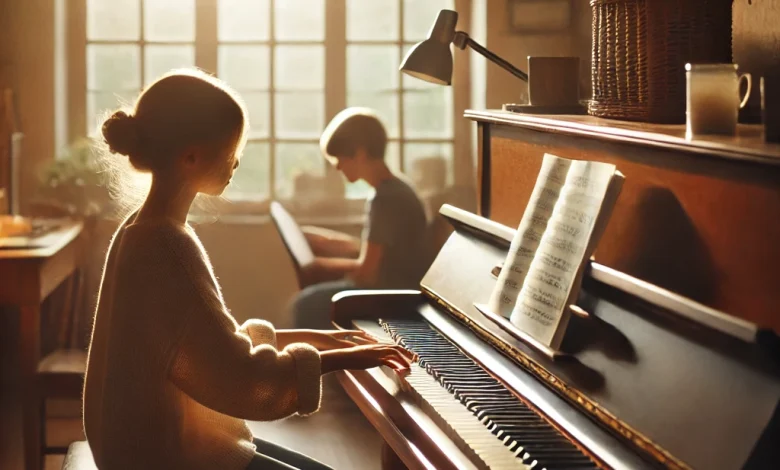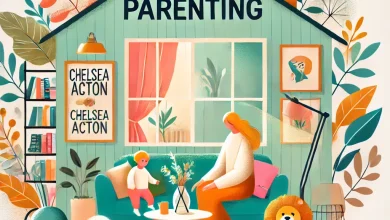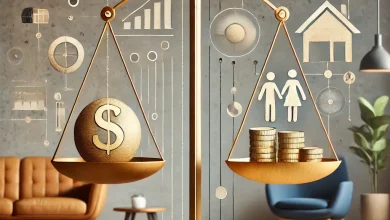15 Proven Tips for Learning to Play the Piano: Master the Keys Like a Pro

Table of Contents
Learning to play the piano is a rewarding and enriching experience that opens up a world of musical possibilities. Whether you’re a complete beginner or someone looking to brush up on your skills, understanding the fundamentals and building your piano-playing technique can make the journey smoother and more enjoyable. In this comprehensive guide, we will explore everything you need to know about learning to play the piano, from the basics to more advanced concepts, with tips and tricks to help you succeed.
Introduction: Why Learning to Play the Piano is Worth It
Learning to play the piano is one of the most fulfilling skills you can acquire. Not only does it provide you with a creative outlet, but it also improves cognitive abilities such as memory, concentration, and problem-solving. Piano playing can reduce stress, improve hand-eye coordination, and even enhance emotional well-being. In this article, we will provide you with a step-by-step guide on how to start learning to play the piano. From selecting the right instrument to mastering the basics and developing your technique, this guide will help you embark on your musical journey with confidence and clarity.
I. Getting Started: Your First Steps in Learning to Play the Piano
Before diving into practicing piano pieces, you must set the foundation by getting the right equipment and learning the essentials of the instrument.
Choosing the Right Piano
When you’re learning to play the piano, one of the first decisions you’ll need to make is whether to choose an acoustic piano or a digital piano. Both types offer unique advantages:
- Acoustic Piano: Known for its rich sound and tactile feel, an acoustic piano is often preferred by those serious about pursuing music. However, it can be expensive and requires regular tuning and maintenance.
- Digital Piano: A more affordable option, digital pianos offer a variety of sounds and volume control. They are more portable and require less maintenance, making them a great choice for beginners or people with limited space.
Setting Up Your Practice Space
Your practice space should be quiet, comfortable, and free from distractions. Whether you’re using an acoustic or digital piano, make sure your seat and posture are aligned to avoid strain during practice sessions. A comfortable bench at the right height is essential to maintain good hand and wrist posture.
Understanding Basic Piano Terminology
Before you start playing, it’s essential to familiarize yourself with the basic components of the piano. Here are some important terms:
- Keys: The black and white buttons you press to produce sound.
- Octaves: Groups of 12 keys, including seven white and five black, that repeat across the keyboard.
- Pedals: The foot-operated devices that affect the sound. The right pedal is the sustain pedal, the left is the soft pedal, and the middle pedal (on some pianos) is the sostenuto pedal.
II. Learning the Basics: Music Theory for Beginners
Music theory provides the foundation for understanding how music works. For beginners learning to play the piano, having a grasp of basic music theory is essential to reading sheet music, understanding rhythm, and composing your own pieces.
Notes, Scales, and Intervals
- Notes: Notes are the building blocks of music. On the piano, each note corresponds to a specific key. For example, the white key immediately to the left of a group of two black keys is “C.”
- Scales: A scale is a series of notes arranged in ascending or descending order. The most common scale is the C major scale, which includes the notes: C, D, E, F, G, A, B, C. Scales are important for building finger strength and dexterity.
- Intervals: An interval is the distance between two notes. Understanding intervals helps with sight-reading, transposing music, and ear training.
Reading Sheet Music: The Basics of Notation
Reading sheet music is crucial when learning to play the piano. Music notation consists of symbols that tell you which notes to play and how long to hold them. The two main clefs used in piano music are:
- Treble Clef: Generally used for notes played with the right hand.
- Bass Clef: Used for notes played with the left hand.
As you practice learning to play the piano, you’ll also need to learn how to read rhythms. These are represented by note values such as whole notes, half notes, quarter notes, and so on. Time signatures, typically found at the beginning of a piece of music, tell you how many beats are in each measure.
III. Developing Technique: Building Good Habits
Developing solid piano technique is key to playing fluidly and efficiently. Here are a few foundational elements to focus on as you begin your piano learning journey:
Finger Exercises
To develop finger strength and dexterity, it’s essential to do finger exercises regularly. One of the most common exercises for beginners is the five-finger exercise, where each finger plays a note in sequence. This helps improve control and independence of each finger, essential for playing more complex pieces.
Practicing Scales and Arpeggios
Scales and arpeggios are important exercises that improve finger strength, hand coordination, and memory. Practice playing scales in different keys and at varying speeds. Start slowly and gradually increase speed as you become more comfortable. This will help you develop a smooth, even playing technique and a greater understanding of key structures.
Posture and Hand Position
Maintaining proper posture and hand position is critical to avoiding strain and injury. Sit in the middle of the keyboard, keeping your back straight and your feet flat on the ground. Your arms should be relaxed, and your hands should hover comfortably over the keys. Proper posture helps with long-term comfort and efficiency as you progress.
IV. Finding Your First Songs: Simple Tunes to Start With
Once you have a basic understanding of music theory and some practice with scales and exercises, it’s time to start learning simple songs. As a beginner, it’s best to start with easy, familiar melodies.
Choosing Beginner-Friendly Songs
Begin with well-known, simple songs such as “Twinkle, Twinkle, Little Star,” “Ode to Joy,” or even pop tunes with straightforward melodies. These songs typically involve simple rhythms and easy-to-follow patterns that will help you build confidence and ability. They allow you to practice coordination and reading music without feeling overwhelmed.
Breaking Down the Song
When learning a new song, break it down into smaller sections. Focus on one part at a time—whether it’s the left-hand part or the right-hand part. Once you feel comfortable with each section, gradually combine them and practice playing the entire song. Breaking down a song this way allows you to focus on accuracy and makes the learning process much more manageable.
V. Overcoming Challenges and Staying Motivated
Learning to play the piano can be challenging at times, especially when progress feels slow. However, with patience and persistence, you will improve. Here are some common challenges and strategies to help you overcome them:
Difficulty Reading Music
If you struggle with reading sheet music, practice sight-reading regularly. Start with easy pieces and gradually increase the difficulty as you improve. It can also help to practice reading music away from the piano, such as by using flashcards. This extra practice reinforces your ability to read music and speeds up the process of learning new songs.
Hand Coordination Issues
Playing the piano requires coordination between both hands, which can be tricky for beginners. To overcome this, practice each hand separately before combining them. Focus on slow, deliberate practice to build coordination and muscle memory. Over time, this will make playing with both hands much smoother.
Staying Motivated
It’s common to experience frustration when learning to play the piano. Keep yourself motivated by setting small, achievable goals. Celebrate your progress and don’t compare yourself to others. Remember, consistent practice is the key to improvement. Taking breaks when needed and tracking your progress can also help keep you motivated.
VI. Advancing Your Skills: Beyond the Basics
As you become more comfortable with basic piano skills, you’ll want to expand your musical repertoire and technique. Here are a few ways to continue advancing:
Learning More Complex Pieces
As you progress, start tackling more complex pieces that require greater technical skill and musical understanding. Works by classical composers like Beethoven, Bach, and Chopin offer excellent material for advancing players. These pieces will challenge your technique and deepen your musical knowledge.
Experimenting with Different Genres
Don’t limit yourself to one genre! Learning to play different styles of music—such as classical, jazz, or pop—will help you develop versatility as a pianist. Each genre has unique techniques that will expand your musical abilities and keep your practice exciting.
Taking Lessons
While self-study can take you far, working with a piano teacher can help accelerate your learning. Private lessons or online tutorials can provide valuable insights, feedback, and structure to your practice routine. A teacher can guide you through challenges and ensure that you’re practicing effectively.
VII. Practice Strategies: How to Improve Efficiently
Practice is essential to mastering the piano, but it’s not just about the number of hours you spend at the keyboard. It’s about practicing smart and efficiently.
Focused Practice Sessions
Make each practice session focused and goal-oriented. Instead of practicing without direction, decide in advance what skills you want to improve, whether it’s sight-reading, technique, or learning a new piece. This will help you use your time more effectively and ensure continuous progress.
Use a Metronome
A metronome is a tool that helps you maintain consistent timing as you play. It’s especially useful when practicing difficult sections of a piece or trying to increase your playing speed. Use a metronome to ensure you are playing in time and improving your rhythmic accuracy.
Slow Practice
When learning a challenging piece, always start slow. Playing at a slower tempo allows you to focus on accuracy and technique before gradually increasing the speed. Slow practice is one of the most effective ways to improve your playing and avoid developing bad habits.
VIII. Conclusion: The Long-Term Rewards of Learning to Play the Piano
Learning to play the piano is a journey that takes time, patience, and dedication. The skills you develop not only enhance your musical abilities but also improve your cognitive functions and overall well-being. By following the steps outlined in this guide, you can progress from a beginner to an accomplished pianist. Remember, the most important part of learning to play the piano is enjoying the process. Keep practicing, stay motivated, and celebrate your milestones along the way. Your musical journey is just beginning, and the possibilities are endless!
This comprehensive guide on learning to play the piano provides you with everything you need to start your musical journey. By following the steps outlined here and consistently practicing, you will develop the skills needed to become a proficient pianist. Happy playing!
FAQs
1. How long does it take to Learning to play the piano?
The time it takes to learn to play the piano depends on several factors, including your goals, the amount of time you dedicate to practice, and your natural aptitude for music. On average, beginners may take anywhere from 6 months to 1 year to become comfortable with basic techniques and play simple songs. More advanced skills and mastery can take several years of consistent practice.
2. Do I need to know how to read music before Learning to play the piano?
No, you don’t need to know how to read music before starting. Many beginners begin with learning basic music theory and the layout of the keyboard. However, understanding how to read music will certainly help you progress faster in the long run. You can start with basic note reading alongside learning to play the piano.
3. Can I learn to play the piano without a teacher?
Yes, it is possible to learn to play the piano on your own, especially with the help of online resources, tutorial videos, and piano apps. However, a teacher can provide personalized guidance, correct mistakes, and help you progress faster. If self-teaching, make sure to stay disciplined and practice regularly.
4. How much practice is needed to get good at Learning to play the piano?
To make consistent progress, aim for at least 30 minutes to 1 hour of practice per day. As you advance, you may find that practicing longer sessions becomes more beneficial. The key is consistent and focused practice. Quality over quantity is essential, so focus on technique, reading, and mastering smaller sections of pieces.
5. What are the best beginner songs to Learning to play the piano?
Some great beginner songs include “Twinkle, Twinkle, Little Star,” “Ode to Joy,” “Mary Had a Little Lamb,” and simple classical pieces like “Minuet in G” by Bach. These songs have simple rhythms and limited hand movement, making them ideal for beginners.
6. Is it important to learn both hands at the same time?
Learning to play with both hands at the same time can be challenging at first, but it’s essential for becoming a well-rounded pianist. Initially, you can start by practicing one hand at a time before combining them. Over time, your brain and muscle memory will adapt to the coordination required to play with both hands together.
7. What type of piano should I buy as a beginner?
If you’re just starting, a digital piano or a keyboard with weighted keys is a great choice. They are more affordable and require less maintenance than acoustic pianos, while still offering a realistic playing experience. If you have the space and budget, an acoustic piano provides a more traditional experience. Make sure the instrument has a full-sized keyboard (88 keys) for a better learning experience.
8. How can I stay motivated while Learning to play the piano?
Staying motivated is key to long-term success. Set small, achievable goals, such as learning a song or improving a technique. Celebrate your progress, even the small wins. It can also be helpful to mix up your practice routine with songs you enjoy playing, exploring different genres, or playing along with others.
9. Should I learn music theory while Learning to play the piano?
Yes, learning music theory alongside learning the piano is beneficial. Understanding basic concepts like scales, intervals, and key signatures helps you become a more well-rounded musician. While you don’t need to dive deeply into theory immediately, integrating it with your piano practice will enhance your ability to read music and play more complex pieces.
10. Can I play advanced pieces after a year of Learning to play the piano?
After about a year of consistent practice, you may be able to play some intermediate-level pieces, but advanced pieces typically require more time and experience. It’s essential to build a solid foundation first and gradually tackle more challenging music. Piano playing is a journey, and each stage brings its own rewards.
11. Is it okay to learn to play the piano at any age?
Absolutely! It’s never too late to start learning the piano. Whether you’re a child, teenager, or adult, playing the piano provides cognitive, emotional, and physical benefits. The key to success at any age is patience, consistent practice, and setting realistic goals.
12. What are some common mistakes beginners make when Learning to play the piano?
Some common mistakes include poor hand posture, not practicing regularly, trying to play too fast before mastering the basics, and neglecting to learn to read music. Additionally, some beginners focus too much on playing songs and neglect developing solid technical skills, which can hinder long-term progress.
13. How do I overcome frustration while learning the piano?
Frustration is a common part of learning any instrument. To overcome it, be patient with yourself and break down difficult pieces into smaller sections. Celebrate small victories, take breaks when needed, and remember that consistent practice is the key to progress. Consider recording yourself to track improvement, or share your learning experience with friends or online communities for encouragement.
14. Can learning to play the piano improve my brain function?
Yes, learning to play the piano offers several cognitive benefits. It helps improve memory, concentration, and problem-solving skills. It also enhances spatial-temporal skills and increases brain connectivity. Playing the piano can help boost creativity, reduce stress, and even improve your emotional well-being.
15. How do I transition from a beginner to an intermediate player?
To transition to an intermediate level, start by challenging yourself with more complex pieces, varying your practice routine, and learning new musical techniques. Focus on improving sight-reading, rhythm, and dynamics. If possible, seek feedback from a teacher or mentor to guide your development and expand your musical knowledge.



